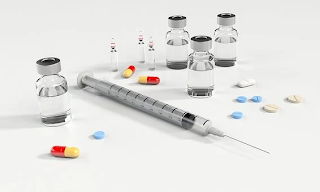480

Follow us on Medium!
Researchers at the University of Rochester Medical Center (URMC), USA, have found that 92 percent of older adults with cancer face an issue called “polypharmacy”. In a typical scenario, a patient coming for cancer treatment reports taking medications that might include medicines for diabetes, heart disease or high blood pressure, or an antidepressant. But, they may not report these medications as often to the medical team.
Image Credits: Pixabay
This concurrent use of multiple medications is known as Polypharmacy, which can make people more prone to harmful drug interaction. It is dangerous, especially for cancer patients who are about to undergo treatment.
“Even for individuals who do not have cancer, multiple medication use is fraught with risks and tricky to navigate because of the emotions involved,” said Erika Ramsdale, M.D., an Oncologist, Geriatrics Specialist at Wilmot Cancer Institute, URMC. Further, she added that the risk of inappropriate use and serious drug interaction increases if a person is consuming multiple drugs and supplements. Due to inappropriate healthcare facilities, the issue becomes complicated, and no other drugs can be prescribed to nullify the effects of the original medicines.
About The Study
Researchers at the Wilmot Cancer Institute analyzed a group of 718 adults with a mean age of 77 who had stage 3 or 4 cancer, other common health issues, and their medication use. They looked for potentially inappropriate drugs that have higher risks than benefits known as PIMS (Paediatric Inflammatory Multisystem Syndrome) which includes immune responses like inflammation or swelling. They also checked drug-drug interaction (DDI) and drug-cancer treatment interaction (DCI) in the human body. The effects of drug interactions include functional decline, falls and death. Patients who consume several drugs suffer from depression or anxiety.
Researchers at the Wilmot Cancer Institute analyzed a group of 718 adults with a mean age of 77 who had stage 3 or 4 cancer, other common health issues, and their medication use. They looked for potentially inappropriate drugs that have higher risks than benefits known as PIMS (Paediatric Inflammatory Multisystem Syndrome) which includes immune responses like inflammation or swelling. They also checked drug-drug interaction (DDI) and drug-cancer treatment interaction (DCI) in the human body. The effects of drug interactions include functional decline, falls and death. Patients who consume several drugs suffer from depression or anxiety.
Study Outcomes
Researchers found that 70 percent of patients were at the risk of DDI and 67 percent were consuming at least one drug that was considered inappropriate. Further, 61 percent of the patients were taking five or more drugs before the therapy and nearly 15 percent were taking 10 and more medications. About 68 percent had serious health conditions besides cancer. The most common was cardiovascular disease.
Approximately 10 percent of the admitted older adults were associated with hazardous drug interactions. Among the older adults receiving cancer treatment, polypharmacy was associated with a considerable increase (up to 114 percent) in unplanned hospitalizations.
Minerals, thyroid therapy and cholesterol-lowering drugs were commonly involved in potential drug interactions. More than 25 percent of the patients in the study’s medications were non-prescribed and accounted for 40 percent of inappropriate medications.
Common non-prescribed medications include minerals and vitamins, anti-anaemic (drug that increases the number of red blood cells in the blood) preparations such as ferrous sulphate, and medicines for acid-related problems and constipation.
The Solution: Deprescribing
The study suggested deprescribing some drugs as a solution to polypharmacy and its effects.
The study suggested deprescribing some drugs as a solution to polypharmacy and its effects.
Deprescribing is the practice of reducing the number of medications to manage polypharmacy. Healthcare supervisors consider the risk-versus-benefits of each drug and the patient’s life expectancy. For example, statins are used to control high cholesterol and do not have an immediate effect. These are preventive and can take 10 years to have an impact. Therefore, an older patient with incurable cancer has not prescribed this medication. The goal of the study is to provide a better lifestyle to patients by reducing their dependency on multiple drugs, concluded researchers.
The detailed study has been published in the journal The Oncologist.
Follow us on Medium!

